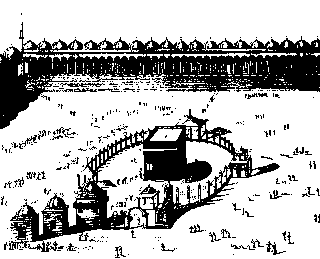
Lines of Faith
Introduction
"Today have I
perfected your religious law for you, and have
bestowed upon you the full
measure of My blessings, and willed
that self-surrender unto Me (Islam)
shall be your religion." (5.3)
The 1998 Student Exhibition displays Islamic scientific instruments from
this museum, which houses one of the best collections of this type in the world.
These instruments are inscribed with many elaborate engravings, which show that
they not only had a scientific role - they also played an integral role in
religious practice.
Art and scientific knowledge were cultivated
intensively in the Islamic world during its first six centuries, especially in
the 9th and 10th centuries AD. Islamic scholars became substantially acquainted
with the scientific understanding of older civilisations, of which the Greek was
the most important. This newly acquired knowledge was re-evaluated in Islamic
religious society. In Islam, the study and practice of astronomy and astrology
were of practical importance and significance for two reasons - the study of the
cosmos could be seen as part of the revelation of the true meaning of the Qur'ãn
and of God's universe, and secondly for practical reasons related to the rituals
of religious life.
The Qur'ãn states that Muslims must pray in
the direction of Mecca at certain times of the day, and fast during the Holy
Month. Each of these requirements involves complex astronomical and mathematical
problems, which led to the production of scientific instruments with a clear
religious function, displaying Lines of Faith.